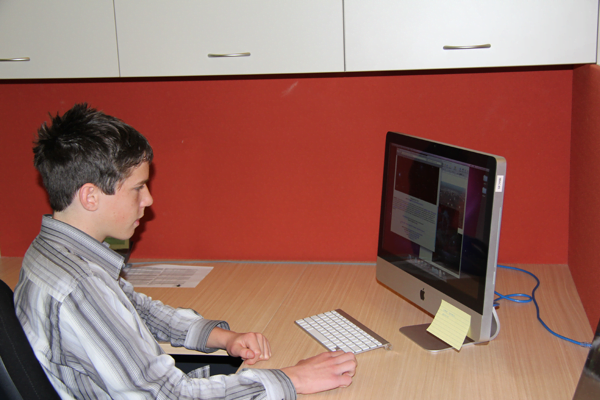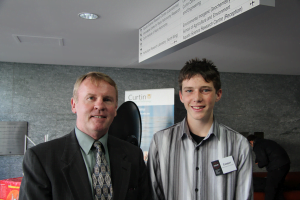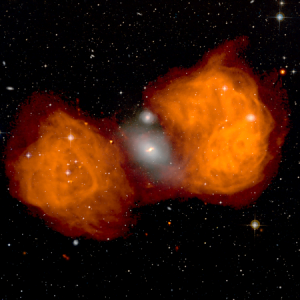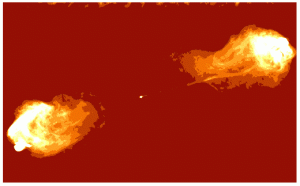September 13th, 2010
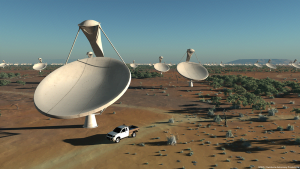
Artist’s impression of the SKA. Click image for bigger. Credit: Swinburne Astronomy Productions and the SPDO.
Hi, my name is Cooper and I have just completed my first day of work experience at ICRAR. After the long drive up from Bridgetown yesterday, I was keen to begin my week of experiencing a taste of the various fields of astronomy at ICRAR.
I began the day with a tour of the centre by Outreach and Education Officer Kirsten Gottschalk, who has kindly organised this week for me. Following the tour I was shown the week’s plans which includes attending a presentation by Australian astronaut, Dr Andy Thomas, on Tuesday night, which I am very much looking forward to.
The rest of the morning consisted of research at my desk (on a new iMac!) about ICRAR, radio astronomy and the new SKA (Square Kilometre Array). The SKA is an international radio astronomy project and will provide us with amazing new data and help us better understand the universe. We hope the SKA will be constructed in the Mid West of WA and is an exciting prospect for astronomy in Australia, and one of the main reasons ICRAR was formed.
In the afternoon I attended a research session with Myrtille Laas-Bourez and we discussed satellites and the issue of space debris. Humans have created so much debris and at the moment, we have no solution to this growing problem. More and more satellites will be destroyed and we will have to develop new ways to combat the issue.
Thanks for reading and I’ll keep you posted on the weeks events (particularly meeting Andy Thomas!).
September 14th, 2010
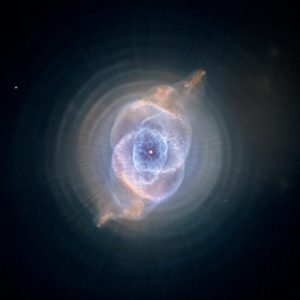
The Cat’s Eye Nebula. Click image for bigger. Credit: NASA, ESA, HEIC, and The Hubble Heritage Team (STScI/AURA)
Today was an amazing day which included meeting Australian astronaut, Andy Thomas! Starting from the top, in the morning I attended a very interesting presentation about the SKA by ICRAR’s director Peter Quinn, which many other school students were also attending. He explained what the SKA will be and showed us some excellent animations of what the project will look like when completed. This really showed us the sheer scale of this project and how great it would be if Australia could be the host country.
Following that presentation I met up with high performance computing researcher Kevin Vinsen and he took me to one of his lectures about ICRAR. The lecture was given to 3rd year computer science students and after introducing one big problem the SKA will present (computer technology needed for the project) he explained how he would like these students to consider helping ICRAR resolve these problems. Next week, Kevin will be giving a similar presentation to year 10 students. To help him prepare for this, I assisted him in altering the presentation so that students my age could understand every aspect of it.
Next on the agenda was to attend a speech by Andy Thomas to many school students from around WA. He explained what it was like being an astronaut; what training he had completed, what the launch process was like, what weightlessness was like, how he ate, his spacewalk experience, the amazing views of earth and finally the re-entry process. I found this an excellent experience and was lucky enough to hear another speech by Andy Thomas later in the day too!
After lunch, Kirsten and took me to Curtin University to help set up the ICRAR ‘Tuning In’ exhibits. Soon after, Andy Thomas arrived and I was lucky enough to attend the afternoon tea with him and other Curtin students and employees. This is where I had my photo taken with Dr Thomas.
It was then time to head over to his public lecture. Many thanks to Pete Wheeler (Outreach and Education Manager) and Kirsten who organised to get me a VIP ticket to the event. This lecture was much like the morning’s one, but I was more than happy to hear him again! There was a difference however, in that a radio connection to the ISS (International Space Station) was made. Students from various schools were able to ask Shannon Walker (Dr Thomas’ wife, also an astronaut) some questions about life on the ISS and what it’s like to be an astronaut.
Today was an excellent experience for me and I learnt a lot! If you are reading this and are looking for a work experience placement, you can’t go past ICRAR. The people here are excellent and you get to do some awesome stuff!
September 15th, 2010
Day 3, only half way through the week and I’ve already done so much. Today was a quieter day compared to yesterday (I’m not sure if you can do any more in a day than what we did yesterday!).
The first part of the morning consisted of blogging and other computer work at my desk. Mid morning, Kirsten and I set off to Curtin to meet Mark Waterson, head of ICRAR’s engineering lab, for a research session. On the way we grabbed some Subway for lunch, which was very tasty.
Once we were in with Mark, I was shown the engineering lab and we set out constructing part of a demonstration radio telescope for an ICRAR outreach exhibit. After all the necessary pieces were in place we hooked it up to a computer and observed the data we were collecting. Radio waves were being collected when we tuned to the frequency of various radio stations. Also, we used a signal generator to emit a certain frequency, to see the what effect it had on our results. We also saw a change in wave patterns when I used my mobile phone to make a call, which was very interesting. Kirsten and Pete plan to use some of these techniques to give students some taste of radio astronomy in a few weeks time.
September 16th, 2010
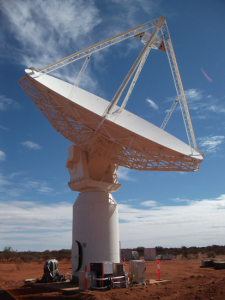
The Australian Square Kilometre Array Pathfinder’s first dish. Credit: Photography by Paul Bourke and Jonathan Knispel. Supported by WASP (UWA), iVEC, ICRAR, and CSIRO
Today was spent at Curtin University where I had two research sessions, one in the morning and one in the afternoon.
The first was with Leith Godfrey who is a post doc. During this time we discussed quasars, galaxies and the advantages of viewing the universe at different points on the electromagnetic spectrum. Astronomers can learn a lot about the universe when observing in x-ray for example, however if x-ray and radio observations are combined, we can learn a lot more from our images. For the remainder of the time, we were sorting through radio observations and deleting the data which we didn’t need. Following this, Leith converted these radio data into an actual image, which was very cool.
My second research session was spent with Tim Colegate, who is completing his PhD in astronomy. Tim showed me his work on the costing of the SKA, which you can imagine adds up to quite a lot! The rest of the afternoon was spent trying to get the video conferencing working ahead of Tim’s meeting with SKA staff in the UK. We got most of it working before I had to leave, however Tim was left with some microphones still not working!
September 17th, 2010
This will be my final day of blogging, what a week! Today was great day (lots of food!).
Up until ten thirty consisted of blogging about the previous two days. Once I’d finished that it was time for morning tea. Every Friday ICRAR have a morning tea, which is looked forward to by all staff. Apparently there is a bit of a competition going of who can make the best food. This is a very good thing!
Following morning tea, I headed off with Dr Martin Meyer. Dr Meyer is currently in discussion with other astronomers from around the world about where exactly to point some telescopes, to research early hydrogen development in the universe. Dust and other bright celestial objects must be avoided so to maximise the effectiveness of the telescope. In this research session I used an internet database to download some images of certain sections of the sky. The aim of this was to double check the already mapped area of the sky, to make sure none of these restricting factors were missed in the original mapping.
In the afternoon, Kirsten and I attended an afternoon tea for ‘ASPIRE’ as part of their ‘birthday’ celebrations. ASPIRE is an organisation aimed to raise aspirations amongst high school students.
This week has been fantastic and has exceeded my expectations. A huge thanks to Kirsten Gottschalk, who has organised my whole week and taken me everywhere, I have thoroughly enjoyed it. So there it is, 5 full days of work experience. If you are ever presented with an opportunity to come to ICRAR for work experience, be sure to take it!
Cooper Lee
